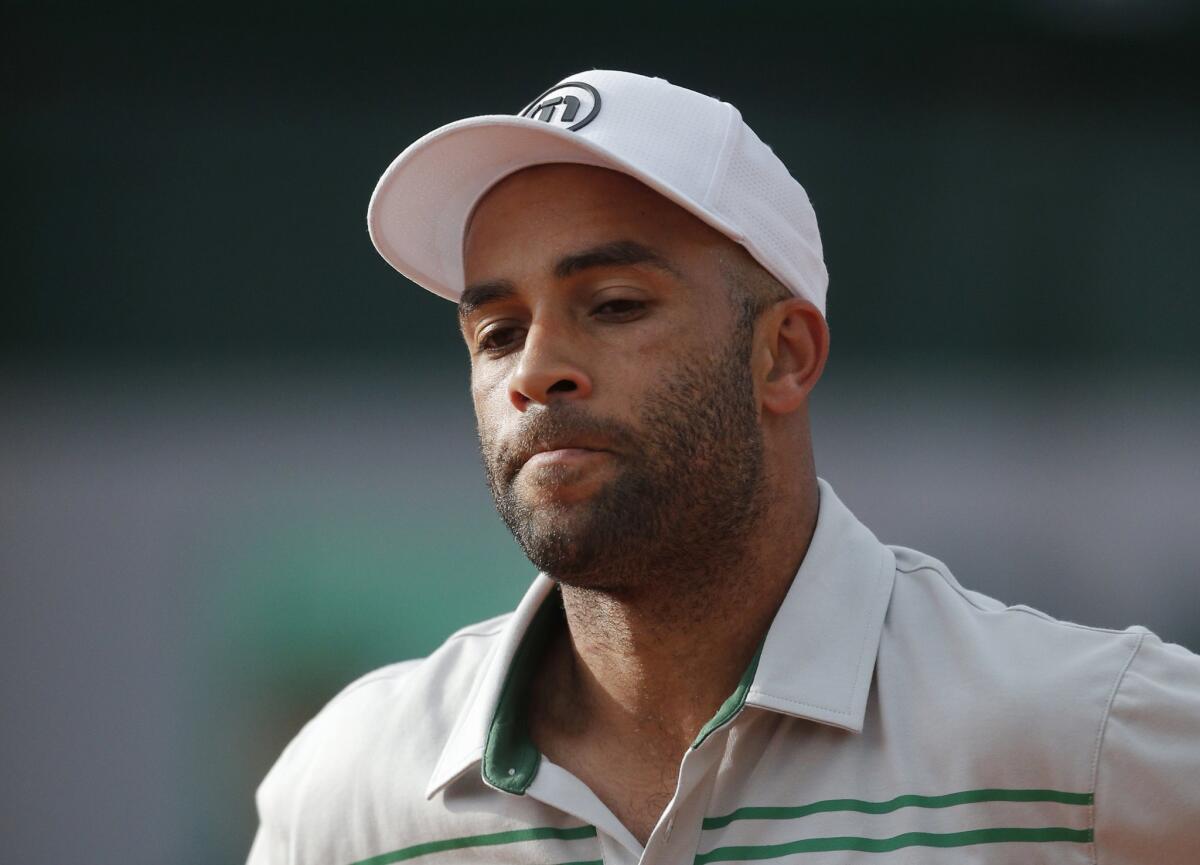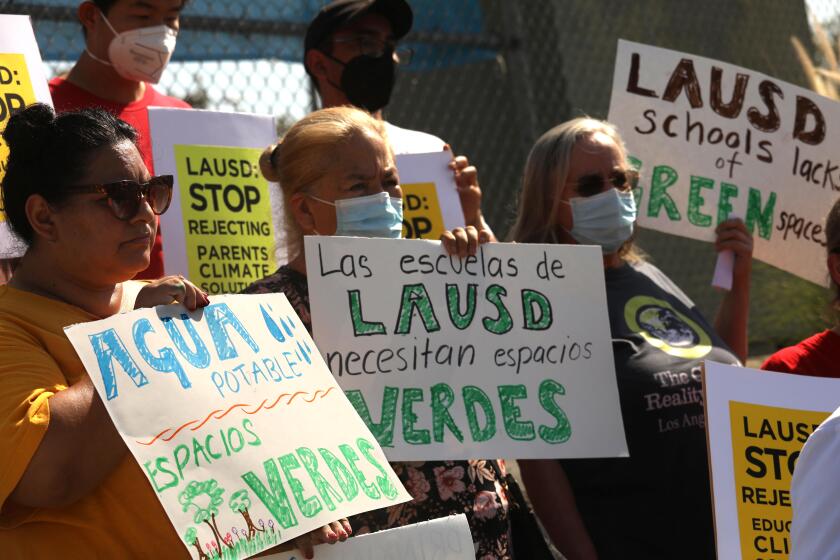Opinion: Was James Blake racially profiled? Does it matter when the cops are this wrong?

James Blake, here at the 2013 French Open, says New York police used unnecessary force when they misidentified him as a suspect in a credit card fraud scam.
- Share via
Retired professional tennis player James Blake complained Wednesday that he was tackled by an undercover New York City cop and handcuffed as he stood outside a hotel awaiting a ride to the U.S. Open tennis tournament.
Blake is biracial. The cop was white. Have we seen this movie before?
Maybe ... maybe not ... probably? According to the New York Daily News, Blake himself says, “In my mind there’s probably a race factor involved, but no matter what there’s no reason for anybody to do that to anybody.”
Citing an unidentified police source, the Daily News reported Blake was misidentified as a suspect wanted on suspicion of using a fake credit card to buy a cellphone, but no description was offered for why, exactly, the police thought Blake was their man. The paper said police also arrested an unidentified man near Blake at the time in connection with the same crime.
Was Blake tackled because of racial profiling? Chief William J. Bratton says no, and that the officers involved had a photograph of a suspect who “looks like the twin brother of Mr. Blake,” and that a witness in the hotel physically identified Blake as a suspect. Let’s hope the pending internal affairs investigation gets the definitive answer to that question quickly. But as Blake points out, there’s another issue at play. Why was the first point of contact between police and a guy supposedly suspected of credit card fraud an act of violence?
SIGN UP for the free Opinion newsletter >>
According to Blake, he was texting someone and looked up to see a guy in shorts and a T-shirt charging at him. Within seconds, Blake had been picked up, slammed to the sidewalk and ordered to roll over on his face and not speak as he was cuffed. Blake said there was no visible badge, and the man did not at first identify himself as a police officer. The cop was quickly joined by several other undercover police who then explained the credit card investigation. Blake, after establishing his identity, was uncuffed and released. The officer who floored Blake was assigned to desk duty after video of the encounter raised questions about his conduct, the New York Times reported.
“You’d think they could say, ‘Hey, we want to talk to you. We are looking into something,’” Blake said. “I was just standing there. I wasn’t running. It’s not even close [to being OK]. It’s blatantly unnecessary.”
So was this a one-off, a single cop who maybe shouldn’t be one, abusing a suspect -- in this case, a misidentified suspect? Or is this a function of training, part of the militarized “warrior mind-set” that has seeped into modern policing?
As Seth Stoughton, a former police officer and now a law professor at the University of South Carolina, wrote earlier this year for Washington Monthly, police are trained to believe that they work “in an intensely hostile world -- one that is, quite literally, gunning for them.” That’s a dangerous point of departure -- for the citizens they are supposed to be serving.
“Officers learn to treat every individual they interact with as an armed threat and every situation as a deadly force encounter in the making. Every individual, every situation — no exceptions,” Stoughton wrote. “A popular police training text offers this advice: ‘As you approach any situation, you want to be in the habit of looking for cover so you can react automatically to reach it should trouble erupt.’ A more recent article puts it even more bluntly: ‘Remain humble and compassionate; be professional and courteous — and have a plan to kill everyone you meet.’”
You can see that mind-set also play out in the expansive use of militarized SWAT units, designed originally by the Los Angeles Police Department to deal with snipers and others committing violent acts but now used primarily to serve search warrants in drug cases, with sometimes disastrous results.
There was no SWAT team involved in the tackling of Blake. There may have been racial profiling -- not enough detail has emerged to make that call. But if Blake’s version of the event is to be trusted -- and there’s no reason at this point for it not to be -- then we at the very least have yet another police officer whose default position when encountering a suspect is an act of violence.
And as Blake says, the only reason we know about this encounter is because he has a platform from which to voice his outrage.
“I have resources to get to the bottom of this. I have a voice,” Blake said. “The real problem is that I was tackled for no reason and that happens to a lot of people who don’t have a media outlet to voice that to.”
Follow Scott Martelle on Twitter @smartelle.
MORE FROM OPINION:
Can we pick out the mass shooters before they kill?
Is law enforcement skewed against people of color? What will the data say?
The Police Commission vs. its audience
More to Read
A cure for the common opinion
Get thought-provoking perspectives with our weekly newsletter.
You may occasionally receive promotional content from the Los Angeles Times.










